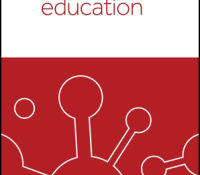tandfonline.com har udgivet en rapport under søgningen “Teacher Education Mathematics”: Emotions in Reading and Learning from Texts: Progress and Open Problems Link til kilde
Like this:
Like Loading...
eric.ed.gov har udgivet: This paper reports an in-depth study that explores the nature and use of mathematics worksheets using a genre analysis approach. Nine secondary level teachers with collective experience from five different countries participated. Through individual online and focus group interviews teachers shared their own worksheets and their understandings and use of worksheets for teaching and learning math. Results indicate that mathematics worksheets have culturally recognizable features and characteristics, they are used to emphasize procedural over conceptual aspects of mathematics learning, and can structure the way mathematics is taught. This study highlights the potential of genre-bending as an approach to extend and re-imagine the structure and use of mathematical texts such as worksheets. [For the complete proceedings, see ED597799.] Link til kilde
Like this:
Like Loading...
tandfonline.com har udgivet en rapport under søgningen “Teacher Education Mathematics”: Abstract Formulae display:?Mathematical formulae have been encoded as MathML and are displayed in this HTML version using MathJax in order to improve their display. Uncheck the box to turn MathJax off. This feature requires Javascript. Click on a formula to zoom. Abstract The present study examined the effect of L1 domain-relevant knowledge on L2 reading comprehension texts among student teachers of ELT (N = 90), drawn from a population of 270 student teachers studying at an undergraduate program in some state universities in Iran. A proficiency test was applied to control language proficiency of students. Among them, those whose scores were one standard deviation above and below the mean were selected and divided into three different groups based on their… Continue Reading →
Like this:
Like Loading...

